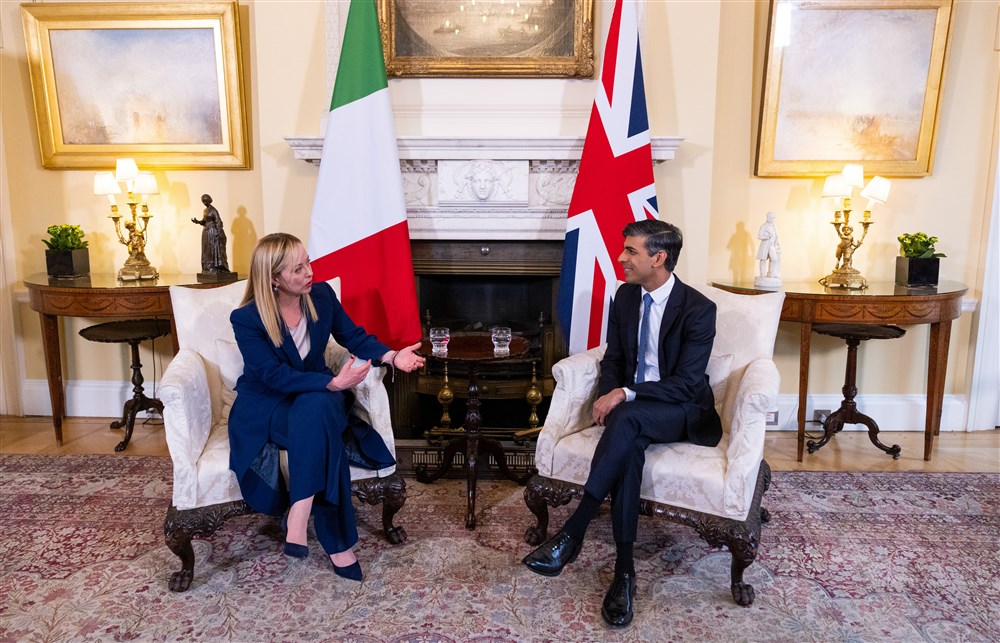Left-wing extremists and anarchists carried out more attacks across the European Union in 2022 than any other group officially identified as a terrorist threat, according to the latest report from Europol. The role of environmental extremism appears an increasingly influential factor.
Thirteen of 16 terrorist attacks recorded in the 27-member bloc last year were attributed to left-wing and anarchist-based terrorism, the annual report on the subject by Europol, the EU’s law enforcement agency, revealed.
The Terrorism Situation and Trend Report (TE-SAT), released June 14, identified jihadist operators as responsible for two successful attacks, with one attributed to right-wing terrorists.
The majority of left-wing attacks – eight – happened in Italy, Europol said. Three left-wing and anarchist terrorist events occurred in Greece, one in Belgium and one in Spain, with one person injured. Arson was the “main modus operandi”, causing “considerable material damage to public and private property, amounting to millions of euros”, the report stated.
Regarding the apparent influence of environmental extremism, Europol highlighted that, during 2022, “there has been a clear uptick in environmental activism” in Member States. The “line between environmental activism and extremism is often a blurred one … some of the environmental activists’ narratives might have the potential to incite violence among extremists”, it said.
The reports notes that “some Member States fear the further radicalisation of parts of the environmental activist scene in the EU towards violent extremist and terrorist activity”.
Some commentators argue that increasing rhetoric around the “climate apocalypse” and “End of Days” prophesies from the likes of Extinction Rebellion and other environmental groups is fuelling more extreme behaviour, while at the same time fostering an atmosphere of existential dread and fear among younger generations.
“The necessary conditions for the radicalisation of climate activism are all in place,” the British journalist Jamie Bartlett writes in an article for online site Foreign Policy and titled The Next Wave of Extremists Will Be Green. “Visit any of the environmentalist websites or blogs and you’ll find an endless run of protests, demos, marches and planned civil disobedience. Something is stirring,” he wrote.
He noted that Earth First!, a radical environmental advocacy group founded in the US in 1980, “has attracted loads of young people getting involved for the first time, all of whom had a sense that something needed to be done and fast”.
Climate change is likely to “directly and indirectly” increase environmental extremism in the EU, the Europol report states. At the same time, it adds, “the lines between different types of terrorism, including right-wing, left-wing, anarchist, jihadist, and other ideologies, are likely to become more blurred in the future”.
That, the report continued, is largely due to the “online environment and emerging technologies” that are “pivotal enablers of propaganda, as well as radicalisation and recruitment of vulnerable individuals into terrorism and violent extremism”.
At the same time, it is important not to lose sight of the impact of actual “place” and “space”, Noémie Bouhana, a professor of Crime Science and Counter Extremism at University College London, and author of The moral ecology of extremism: a systemic perspective, tells the Brussels Signal.
Radicalisation, she explains, often still happens on the ground when large groups come together, especially if the gathering brings together disparate individuals who normally would not come into contact with each other.
“We obsess about the cases of extremism that happen ‘in the basement’, but this tends to be the exception to the rule,” Bouhana says. “It’s rare that a person is moved to violence simply online and without face-to-face interaction.”
Most of those actively concerned about the environment are moderates, she said, and are “not susceptible to having their minds changed about violence”. However, she says that, especially nowadays, given the speed and spread of information, a minority that is susceptible can be drawn to places – for instance an environmental protest – where they interact with those who are more open to violence. This can create a situation, she said, where “radicalisation happens”.
For now, left-wing extremist attacks in the EU are posing more of a threat to property than to human life. This is not the case with the relatively small number of attacks by jihadists and right-wing terrorists; each group accounted for two of the four terrorism-related fatalities in 2022.
Of the 380 people arrested on suspicion of terror-related offences, according to Europol, 70 per cent were held for jihadist-related reasons, such as membership of a terrorist organisation or dissemination of propaganda. One of the report’s “key findings” is that affiliation to particular groups, such as IS and al-Qaeda, is becoming less prominent among supporters of jihadism.
As a result of these emerging trends, Europol concludes that “lone actors are expected to continue to perpetrate most of the terrorist attacks in the EU”, while “right-wing, left-wing and environmentally-inspired terrorism and violent extremism are expected to gain further prominence” in the EU’s “future terrorism landscape”.
Riots that occurred at the start of June in Leipzig, Germany, involving hundreds of far-Left radicals protesting at the conviction of an activist. The unrest involved sabotage that a German police chief said was designed to kill officers.





